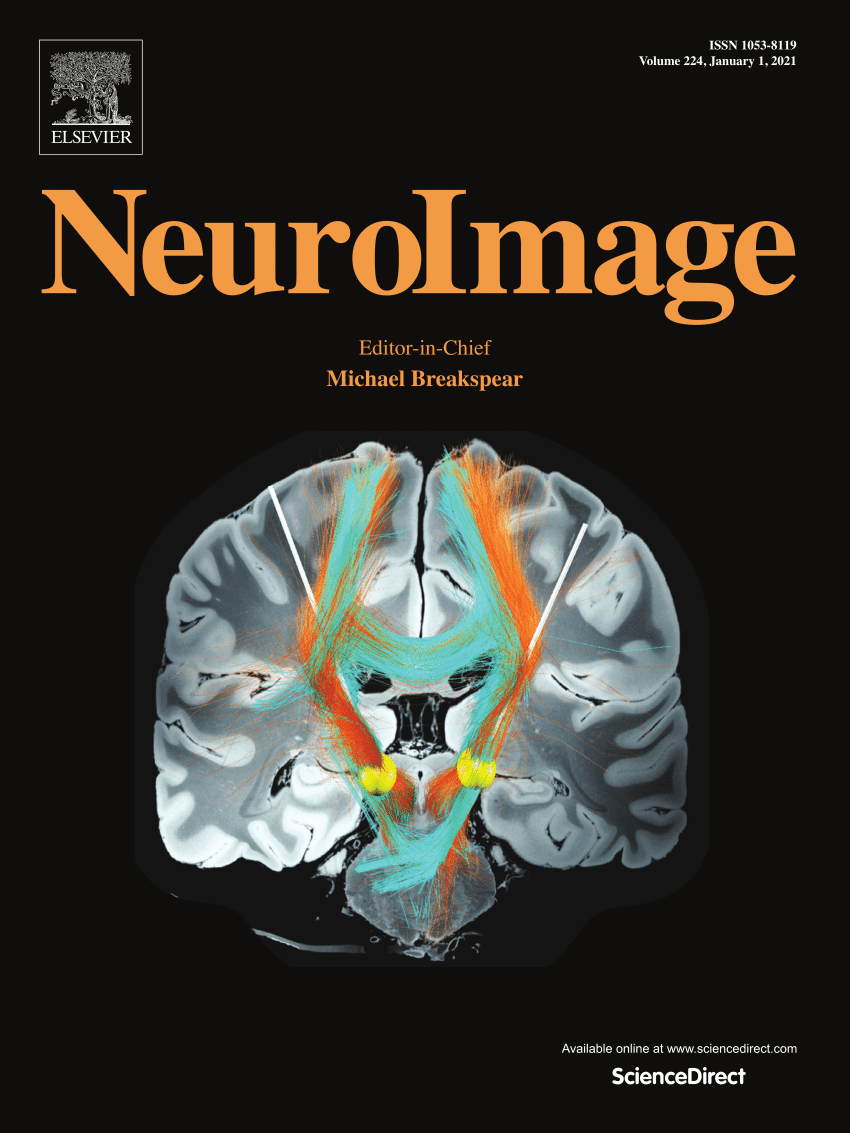重性抑郁症患者反应抑制过程中伽马振荡与心率变异性时空相互作用的关联:一项脑磁图研究
IF 4.7
2区 医学
Q1 NEUROIMAGING
引用次数: 0
摘要
背景:重度抑郁症(MDD)患者的反应抑制功能异常普遍,但反应抑制背后的时空神经活动及其与自主神经系统(ANS)的关系尚不清楚。方法对35名重度抑郁症患者和35名健康对照者进行了go/no-go任务期间的脑磁图(MEG)和心电图(ECG)采集。根据心电图数据计算心率变异性(HRV)指数。分析两组在0-200 ms、200-400 ms和400-600 ms时γ振荡(60-90 Hz)功能连通性(FC)的差异,并分析FC与HRV指标的相关性。结果MDD组的任务表现较HC组差,HRV指标较HC组低。在200-400 ms期间,与HC组相比,MDD组左侧额下回(眼部)与右侧颞极(颞中回)之间的FC减少(t = 3.62, p <;0.05),右额上回(眶部)与右枕上回之间的FC增加(t = 3.68, p <;0.05)。此外,MDD组左侧额下回(眼部)和右侧颞中回(颞极)的FC与HRV指数RMSSD呈显著正相关(r = 0.491, p <;0.05)。结论在MDD患者中存在与反应抑制相关的伽马振荡异常的时空相互作用,且异常的伽马振荡与ANS指数存在任务依赖的协变,提示它们在MDD病理生理中可能存在相互作用。本文章由计算机程序翻译,如有差异,请以英文原文为准。
Association of spatiotemporal interaction of gamma oscillations with heart rate variability during response inhibition processing in patients with major depressive disorder: An MEG study
Background
Impairment in response inhibition function is highly prevalent in patients with major depressive disorder (MDD), yet the spatiotemporal neural activity underlying response inhibition and its relationship with the autonomic nervous system (ANS) remains unclear.
Methods
35 MDD participants and 35 healthy controls (HC) were included with magnetoencephalography (MEG) and electrocardiogram (ECG) data collecting during a go/no-go task. Heart rate variability (HRV) indices were calculated from the ECG data. Differences in functional connectivity (FC) of gamma oscillations (60–90 Hz) between 0–200 ms, 200–400 ms, and 400–600 ms in the two groups after no-go stimuli were analyzed, and the correlation between FC and HRV indices was examined.
Results
The MDD group exhibited poorer task performance and lower HRV indices than the HC group. During the 200–400 ms period, compared to the HC group, the MDD group exhibited decreased FC between the left inferior frontal gyrus (opercular part) and right temporal pole (middle temporal gyrus) (t = 3.62, p < 0.05), and increased FC between the right superior frontal gyrus (orbital part) and right superior occipital gyrus (t = 3.68, p < 0.05). Additionally, a significant positive correlation was found between FC of the left inferior frontal gyrus (opercular part) and right middle temporal gyrus (temporal pole) and the HRV index RMSSD in the MDD group (r = 0.491, p < 0.05).
Conclusion
Abnormal spatiotemporal interactions in gamma oscillations related to response inhibition are observed in MDD patients and abnormal gamma oscillations showed task-dependent covariation with ANS indices, suggesting their potential interplay in MDD pathophysiology.
求助全文
通过发布文献求助,成功后即可免费获取论文全文。
去求助
来源期刊

NeuroImage
医学-核医学
CiteScore
11.30
自引率
10.50%
发文量
809
审稿时长
63 days
期刊介绍:
NeuroImage, a Journal of Brain Function provides a vehicle for communicating important advances in acquiring, analyzing, and modelling neuroimaging data and in applying these techniques to the study of structure-function and brain-behavior relationships. Though the emphasis is on the macroscopic level of human brain organization, meso-and microscopic neuroimaging across all species will be considered if informative for understanding the aforementioned relationships.
 求助内容:
求助内容: 应助结果提醒方式:
应助结果提醒方式:


